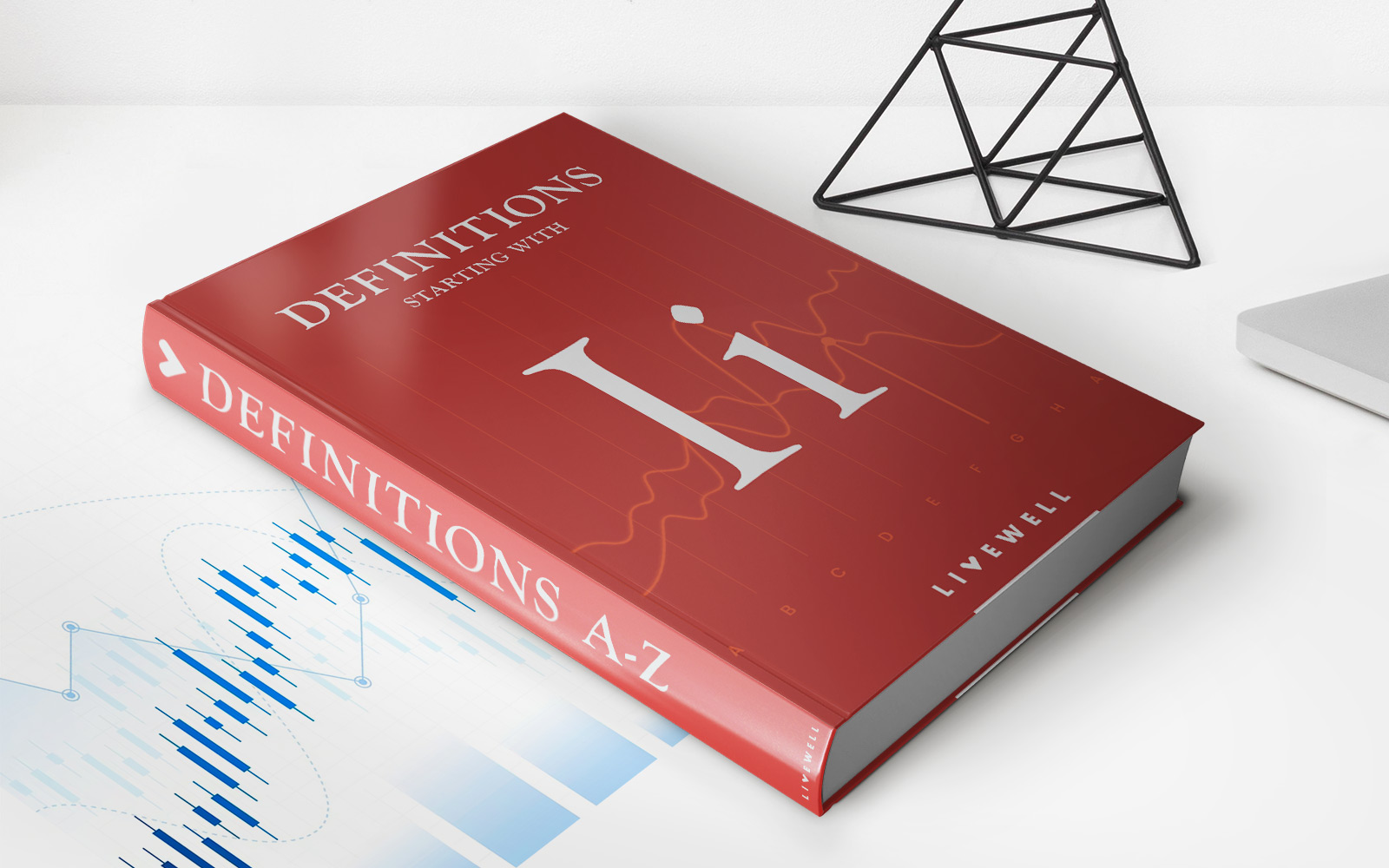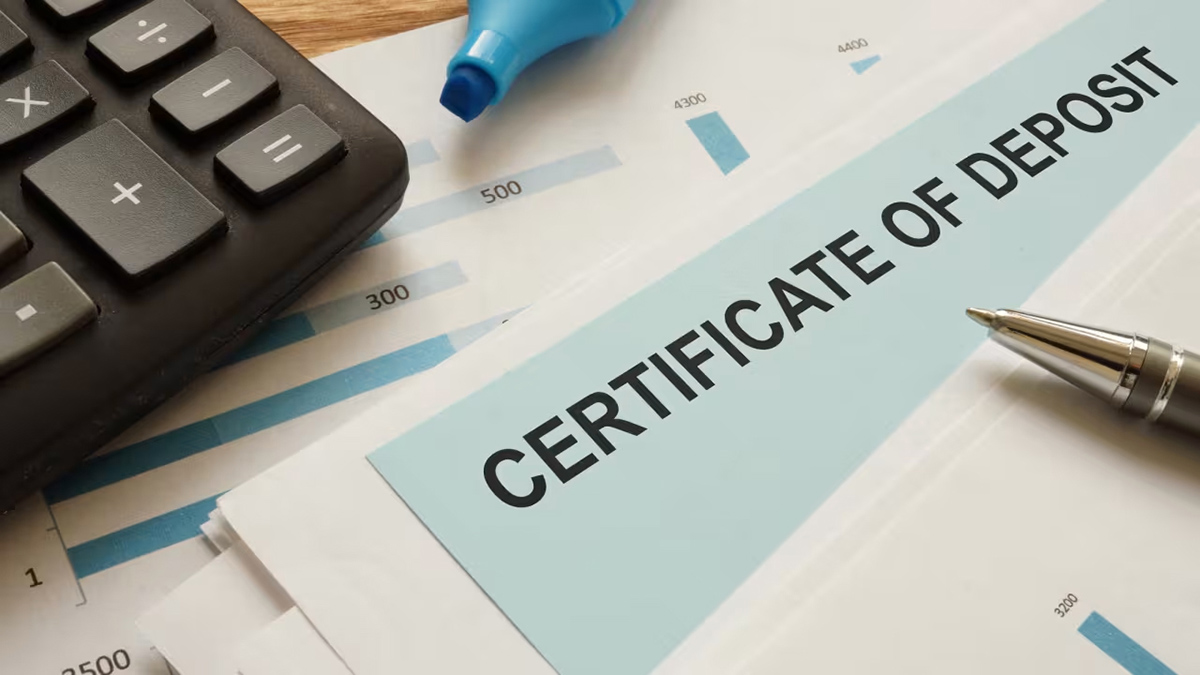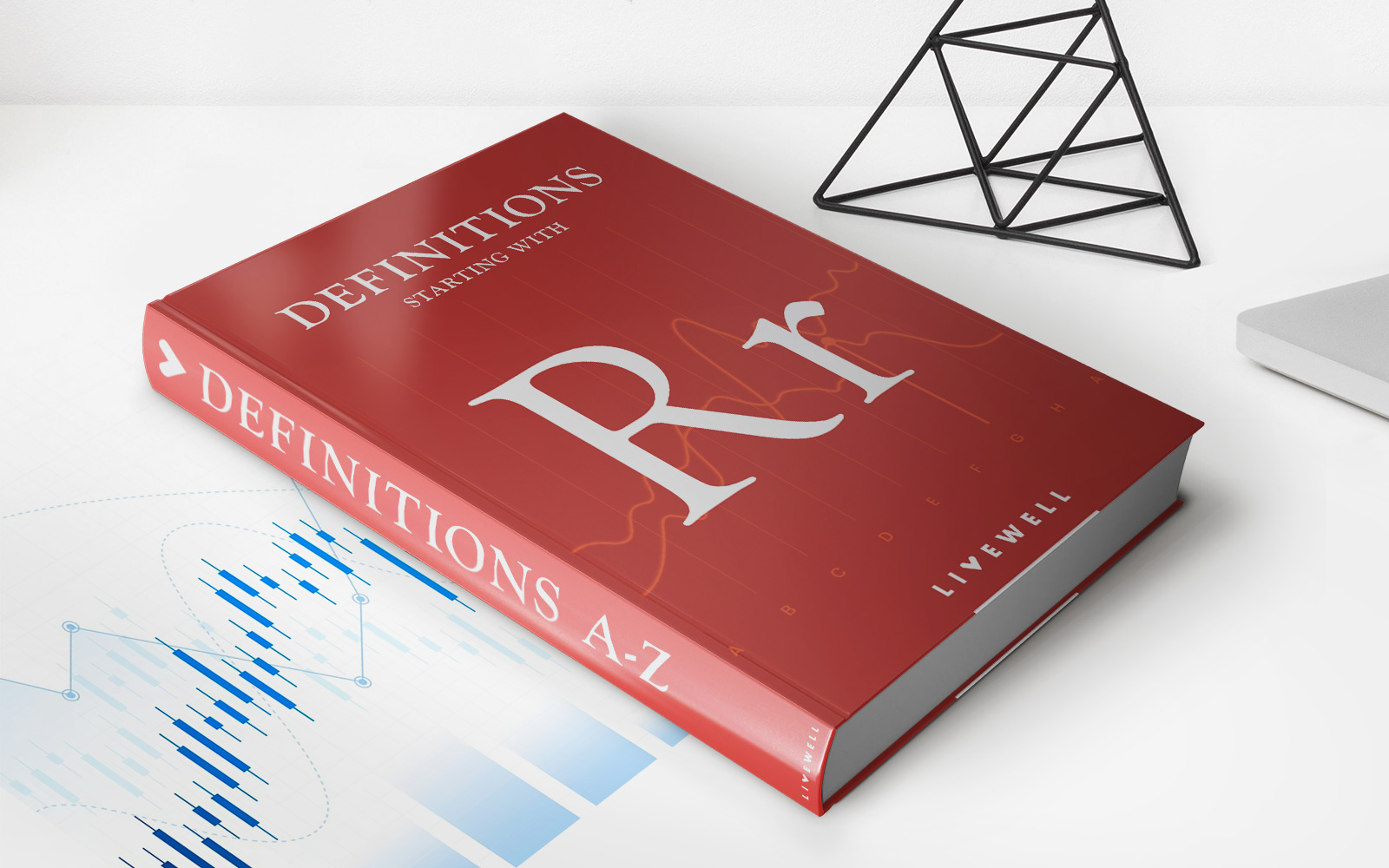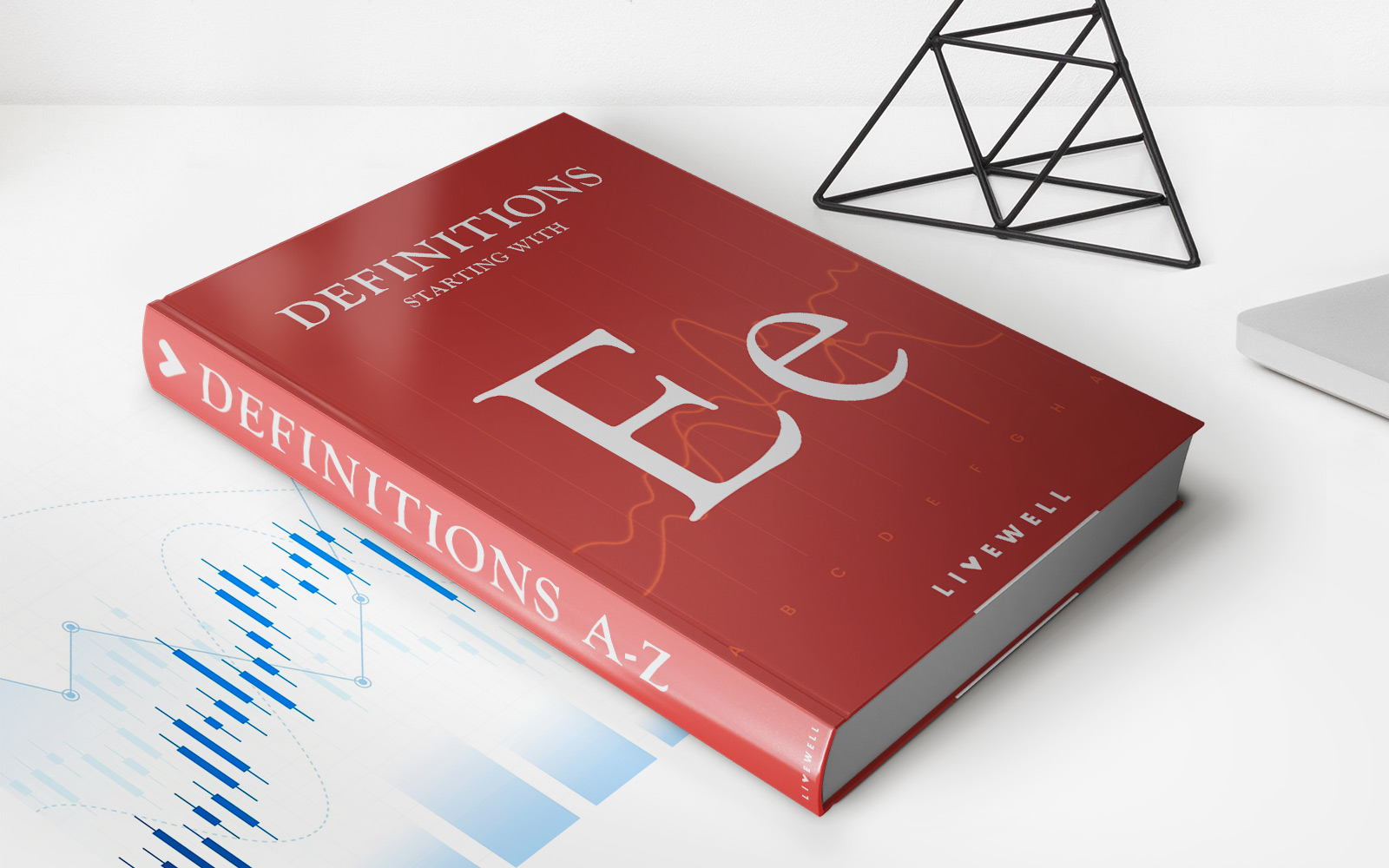

Finance
What Are IRA Certificates Of Deposit
Modified: December 29, 2023
Looking to grow your savings? Learn about IRA Certificates of Deposit and how they can help you achieve your financial goals. Discover the benefits of these secure and lucrative investments.
(Many of the links in this article redirect to a specific reviewed product. Your purchase of these products through affiliate links helps to generate commission for LiveWell, at no extra cost. Learn more)
Table of Contents
Introduction
Welcome to the world of finance and investment! If you’re exploring ways to grow and safeguard your retirement savings, you’ve likely come across various options, one of which is IRA certificates of deposit (CDs). In this article, we’ll dive into the details of IRA CDs, exploring what they are, how they work, their pros and cons, and factors to consider when choosing one. We’ll also discuss how to open an IRA CD and compare it to a traditional IRA.
An Individual Retirement Account (IRA) is a savings account designed to help individuals save for retirement with certain tax advantages. IRA CDs, on the other hand, are a specific type of IRA that combines the benefits of an IRA with the security of a certificate of deposit. These financial products provide a fixed interest rate over a predetermined period, making them a low-risk investment option for individuals who prioritize safety and stable returns.
Understanding the ins and outs of IRA CDs is crucial for optimizing your retirement savings strategy. Whether you’re an experienced investor or just starting your financial journey, this article will provide valuable insights to help you make informed decisions regarding IRA CDs and their role in your retirement portfolio. So, let’s dive in and unravel the world of IRA CDs!
Definition of IRA Certificates of Deposit
Before we delve deeper into how IRA certificates of deposit (CDs) work, let’s first understand what they are. An IRA CD is a financial product that combines the benefits of an Individual Retirement Account (IRA) with the security of a certificate of deposit.
As mentioned earlier, an IRA is a savings account that provides tax advantages for individuals saving for retirement. There are different types of IRAs, including traditional IRAs, Roth IRAs, and SEP IRAs, each with its own set of rules and benefits. An IRA CD is an investment option within these IRA accounts, where you can allocate a portion of your retirement savings into a certificate of deposit.
A certificate of deposit is a fixed-term deposit offered by banks and credit unions. With a CD, you agree to deposit a certain amount of money for a specific period, known as the term or maturity period. In return, the financial institution guarantees to pay you a fixed interest rate over that period. CDs are known for their low-risk nature and are often used by conservative investors looking for a stable return on their investments.
The key feature of an IRA CD is that it is held within an IRA account. This means that the funds you allocate to an IRA CD enjoy the tax advantages that come with the specific type of IRA you hold. For example, if you have a traditional IRA, the contributions you make to the IRA CD may be tax-deductible, and the earnings grow tax-deferred until you withdraw the funds in retirement. On the other hand, with a Roth IRA, you contribute after-tax dollars, and qualified withdrawals, including earnings, are tax-free.
Unlike traditional CDs, where the interest is typically subject to taxes, the interest earned on an IRA CD is sheltered from taxes as long as it remains within the IRA account. This can help you maximize your savings by allowing your earnings to compound over time without the tax bite. However, it’s important to note that once you start withdrawing funds from the IRA, the distributions will be subject to taxes based on the rules of the specific IRA type.
How IRA Certificates of Deposit Work
Now that we have a clear understanding of what IRA certificates of deposit (CDs) are, let’s explore how they work. Investing in an IRA CD involves a straightforward process, but it’s important to grasp the key elements to make informed decisions regarding your retirement savings.
1. Choosing the IRA CD: The first step is to select the IRA CD that suits your investment goals and risk tolerance. You’ll need to consider factors such as the term or maturity period, interest rate, minimum deposit requirement, and any additional features offered by the financial institution. It’s wise to shop around and compare offerings from different banks or credit unions to find the best IRA CD for your needs.
2. Funding the IRA CD: Once you’ve decided on the IRA CD, you’ll need to allocate funds from your existing IRA account or contribute new funds specifically for the CD. The amount you invest in the IRA CD will depend on your financial situation and overall retirement savings strategy.
3. Fixed Term and Interest Rate: IRA CDs have a fixed term, typically ranging from a few months to several years. During this period, your funds are locked in, and you cannot withdraw them without incurring penalties, except in certain circumstances, such as reaching the mandatory distribution age. It’s essential to consider the length of the term carefully to align with your financial goals and liquidity needs.
Additionally, IRA CDs offer a fixed interest rate, which is determined at the time of purchase. This rate remains constant throughout the term, providing you with predictable earnings. The interest earned on the IRA CD is added to your account and can be reinvested or withdrawn, depending on your preference.
4. Tax Advantages: One of the primary benefits of investing in an IRA CD is the tax advantages it offers. Depending on the type of IRA you hold, contributions to the IRA CD may be tax-deductible (traditional IRA) or made with after-tax dollars (Roth IRA). Furthermore, while your funds remain in the IRA account, the interest earned is not subject to taxes. However, it’s crucial to understand that once you start withdrawing funds from the IRA account, the distributions will be subject to taxes based on the rules of the specific IRA type.
5. Renewal and Rollover: As the maturity date of your IRA CD approaches, you’ll have options for what to do with the funds. You can choose to renew the CD with the same financial institution, either for the same term or a different one. Alternatively, you can roll over the funds into a different IRA investment, such as another IRA CD, a mutual fund, or stocks. It’s important to evaluate your financial goals and current market conditions before making a decision.
Remember, throughout the process, it’s crucial to keep track of your IRA CD’s performance and ensure it aligns with your retirement plans. Regularly reviewing your investment strategy and consulting with a financial advisor can help you make any necessary adjustments to maximize your savings.
Pros and Cons of IRA Certificates of Deposit
Now that we have explored how IRA certificates of deposit (CDs) work, let’s delve into the pros and cons of investing in these financial products. Understanding the benefits and drawbacks will help you make an informed decision about whether IRA CDs are the right fit for your retirement savings strategy.
Pros of IRA Certificates of Deposit:
- Security: One of the primary advantages of IRA CDs is the security they offer. By investing in a CD, you have a guaranteed return on your investment, as long as you hold it until maturity. This makes IRA CDs an attractive option for conservative investors who prioritize capital preservation over high-risk returns.
- Stable Returns: IRA CDs provide a fixed interest rate over the term of the investment. This means you can anticipate the exact amount of interest you’ll earn, allowing for better financial planning and budgeting. The stability of returns makes IRA CDs particularly appealing for individuals who seek consistent income during retirement.
- Tax Advantages: As mentioned earlier, investing in an IRA CD within an Individual Retirement Account comes with tax advantages. Contributions to traditional IRA CDs may be tax-deductible, reducing your taxable income in the year of contribution. Additionally, the interest earned on the IRA CD is tax-deferred or tax-free, depending on the type of IRA you hold.
- Low Risk: IRA CDs are considered low-risk investments since they are backed by the Federal Deposit Insurance Corporation (FDIC) for banks or the National Credit Union Administration (NCUA) for credit unions. The FDIC and NCUA provide insurance coverage on deposits up to a certain amount, protecting your investment against bank or credit union failures.
- Diversification: Including IRA CDs in your retirement portfolio can serve as a diversification strategy. By diversifying your investments, you reduce the overall risk and increase the potential for steady returns over time. IRA CDs can complement other riskier or more volatile investments in your portfolio, providing a stable foundation.
Cons of IRA Certificates of Deposit:
- Opportunity Cost: One of the drawbacks of IRA CDs is the potential opportunity cost compared to other investment options. While IRA CDs provide security and stable returns, they may not generate as high of a return as riskier investments, such as stocks or mutual funds, over the long term. It’s important to consider your risk tolerance and financial goals when deciding the allocation of your retirement savings.
- Liquidity Restrictions: Investing in an IRA CD means locking your funds for a specific term until maturity. If you need access to your money before the CD reaches maturity, you may face penalties, such as early withdrawal fees or the loss of some interest earnings. It’s crucial to evaluate your liquidity needs and ensure you have enough accessible funds for emergencies or unexpected expenses.
- Fixed Interest Rate Risk: While the fixed interest rate of IRA CDs provides stability, it also means you may miss out on higher interest rates if market rates rise during the CD’s term. This interest rate risk can result in an opportunity cost if you could have earned a better return by investing in other financial products.
- Inflation Impact: IRA CDs may be negatively impacted by inflation. If the inflation rate exceeds the interest rate on your CD, the purchasing power of your returns may decrease over time. Considering the potential impact of inflation is important when evaluating the suitability of IRA CDs in your retirement savings strategy.
- Minimum Deposit Requirement: Some IRA CDs may have minimum deposit requirements, meaning you’ll need to have a specified amount of money to invest. This can be a disadvantage for individuals with limited savings who may not meet the minimum threshold set by financial institutions.
Considering both the pros and cons of IRA CDs will help you assess whether they align with your personal financial goals, risk tolerance, and overall retirement strategy. It’s always recommended to consult with a financial advisor to gain personalized insights and make informed decisions.
Factors to Consider when Choosing IRA Certificates of Deposit
When selecting an IRA certificate of deposit (CD), it’s important to consider several key factors to ensure that it aligns with your financial goals and retirement strategy. By evaluating these factors and conducting thorough research, you can make an informed decision about the best IRA CD for your needs. Let’s explore the important considerations:
1. Interest Rates:
The interest rate offered on an IRA CD is a crucial factor to consider. It determines the amount of return you will earn on your investment. Compare the rates offered by different financial institutions and consider whether you prefer a fixed or variable interest rate. Keep in mind that higher interest rates may be accompanied by longer terms or higher minimum deposit requirements.
2. Term Length:
The term length of an IRA CD refers to the duration of the investment. Consider your financial goals and liquidity needs when choosing the term length. Short-term CDs allow for more liquidity but typically offer lower interest rates, while longer-term CDs offer higher rates but lock up your funds for a longer period. It’s important to strike a balance between the two based on your risk tolerance and financial planning.
3. Minimum Deposit Requirement:
Financial institutions may have a minimum deposit requirement to open an IRA CD. Evaluate your available savings to ensure you can meet the minimum deposit requirement. If you have a limited amount of funds, look for institutions that offer low minimum deposit options to access IRA CDs.
4. Penalties and Fees:
Understand the penalties and fees associated with the IRA CD. Early withdrawal penalties are common if you need to access your funds before the maturity date. Ensure that you fully comprehend the penalties and factor them into your decision-making process. Look for institutions with more flexible penalty terms if you anticipate needing liquidity in the future.
5. FDIC or NCUA Insurance:
Confirm that the financial institution offering the IRA CD is backed by the Federal Deposit Insurance Corporation (FDIC) or the National Credit Union Administration (NCUA). This insurance coverage protects your investment up to a certain limit, providing peace of mind in case of bank or credit union failure.
6. Customer Service and Reputation:
Consider the reputation and customer service of the financial institution offering the IRA CD. Look for reputable organizations with positive customer reviews and a track record of reliable service. Outstanding customer service can provide assistance when needed, from account management to handling potential issues or inquiries.
7. Automatic Renewal and Rollover Options:
Find out if the IRA CD automatically renews at maturity or provides options for rollovers. Automatic renewal can simplify the process but may not be ideal if you want to reassess your investment options at the end of the term. On the other hand, rollover options allow you to explore different investment opportunities or adjust your strategy based on market conditions.
By carefully considering these factors, you can make an informed choice when selecting an IRA CD that best suits your needs, risk tolerance, and financial objectives. Taking the time to research and consult with a financial advisor can help you optimize your retirement savings strategy.
How to Open an IRA Certificate of Deposit
If you’ve decided that an IRA certificate of deposit (CD) is the right investment option for your retirement savings, here are the steps to open one:
1. Choose a Financial Institution:
Research and compare different financial institutions that offer IRA CDs. Look for reputable banks or credit unions that provide competitive interest rates and favorable terms. Consider factors such as customer service, FDIC or NCUA insurance, and any additional features or benefits that may be important to you.
2. Determine Your IRA Type:
Decide on the type of IRA you want to open. The most common options are traditional IRA and Roth IRA. A traditional IRA allows for tax-deductible contributions (subject to income limits), while a Roth IRA requires after-tax contributions but allows for tax-free qualified withdrawals. Consider your current tax situation and future tax goals when choosing the IRA type.
3. Fund your IRA Account:
If you don’t already have an IRA account, you’ll need to open one. Contact the financial institution of your choice to initiate the process. You may need to provide personal information, such as your social security number, date of birth, and employment details. Depending on the institution, you may be able to complete the application process online, over the phone, or in person.
4. Allocate Funds to IRA CD:
Once your IRA account is set up, determine the amount of funds you want to allocate to an IRA CD within the account. Consider your risk tolerance, investment goals, and liquidity needs when deciding the percentage of your funds to invest in the CD. Ensure that you have enough funds remaining in the account for other investments or cash needs.
5. Select the IRA CD:
Choose the specific IRA CD within your IRA account that meets your criteria. Consider factors such as the interest rate, term length, minimum deposit requirement, and any additional features offered by the financial institution. Ensure that it aligns with your investment goals and risk tolerance.
6. Complete the Documentation:
Complete the necessary documentation to open the IRA CD. This may include filling out an application form, providing your IRA account details, designating beneficiaries, and agreeing to the terms and conditions of the CD. Make sure to review the documents carefully and seek clarification if needed.
7. Deposit Funds:
Transfer the allocated funds from your IRA account into the IRA CD. This can typically be done electronically, through a direct transfer or rollover. Ensure that you comply with IRS rules and regulations regarding IRAs and avoid any potential tax implications or penalties.
8. Monitor and Manage:
Once your IRA CD is opened, it’s important to monitor its performance and manage your overall retirement savings strategy. Keep track of the CD’s maturity date, interest payments, and any renewal or rollover options. Regularly review your investment strategy and consult with a financial advisor to ensure you’re on track to meet your retirement goals.
By following these steps, you can open an IRA certificate of deposit and take advantage of its stability and tax advantages as part of your retirement savings plan.
IRA Certificate of Deposit vs. Traditional IRA
When it comes to retirement planning, two common options individuals consider are IRA certificate of deposit (CD) and traditional IRA. While both vehicles serve a similar purpose of helping individuals save for retirement, they have distinct characteristics and features. Understanding the differences between the two can help you make a more informed decision about which option is best suited for your financial goals and needs.
Traditional IRA:
A traditional IRA is a tax-advantaged account that allows individuals to make tax-deductible contributions, subject to income limits, and provides tax-deferred growth on the investments within the account. With a traditional IRA, contributions are made with pre-tax dollars, which can potentially lower your taxable income in the year of contribution. The contributions and earnings in the account are taxed when you withdraw them during retirement.
Some key points about traditional IRAs include:
- Tax Deductible Contributions: Depending on your income and employer-sponsored retirement plans, contributions to a traditional IRA may be tax-deductible. This can provide an upfront tax benefit by reducing your taxable income.
- Tax-Deferred Growth: Traditional IRAs offer tax-deferred growth, meaning earnings within the account are not subject to taxes until you make withdrawals during retirement. This allows your investments to potentially grow at a faster rate due to compounding returns.
- Early Withdrawal Penalties: With traditional IRAs, withdrawing funds before the age of 59½ may result in a penalty of 10% in addition to regular income taxes. There are exceptions to this penalty, such as for certain medical expenses or first-time homebuyer expenses.
- Required Minimum Distributions (RMDs): Starting at age 72, individuals must begin taking required minimum distributions (RMDs) from their traditional IRAs. These distributions are subject to income taxes and help ensure that individuals withdraw a portion of their retirement savings over their lifetime.
IRA Certificate of Deposit (CD):
An IRA CD is a specific investment option within an IRA account that offers a fixed interest rate over a predetermined period. It provides the security of a certificate of deposit while benefiting from the tax advantages of an IRA. IRA CDs are often chosen by individuals who prioritize capital preservation and stable returns.
Some key points about IRA CDs include:
- Fixed Interest Rate: IRA CDs offer a fixed interest rate for the duration of the investment, providing predictable earnings. This makes them appealing for individuals who prefer a stable return on their investment.
- Low Risk: IRA CDs are considered low-risk investments since they are insured by the Federal Deposit Insurance Corporation (FDIC) for banks or the National Credit Union Administration (NCUA) for credit unions. They are a suitable option for conservative investors who prioritize the safety of their principal amount.
- Tax Advantages: By holding an IRA CD within an IRA account, you can benefit from the tax advantages of that specific type of IRA. For example, with a traditional IRA, contributions may be tax-deductible, and earnings grow tax-deferred until withdrawal in retirement.
- Limited Liquidity: Investing in an IRA CD typically involves a lock-in period until the maturity date. Withdrawing funds before maturity may result in penalties or loss of interest earnings. This limited liquidity should be considered to ensure you have sufficient accessible funds for emergencies or other needs.
Ultimately, the decision between an IRA CD and a traditional IRA depends on your risk tolerance, investment objectives, liquidity needs, and tax considerations. Some individuals may prefer the stability and security of an IRA CD, while others may opt for the potential growth and flexibility of a traditional IRA. It’s always recommended to consult with a financial advisor to assess your personal situation and determine the best course of action for your retirement savings plan.
Conclusion
As you navigate the realm of retirement planning and explore investment options, it’s essential to consider the benefits and nuances of IRA certificates of deposit (CDs). These financial products combine the advantages of an Individual Retirement Account (IRA) with the security of a certificate of deposit, making them an attractive choice for risk-averse investors.
IRA CDs provide investors with a plethora of advantages. They offer security and stability, guaranteeing a fixed interest rate over a specified period. This predictability allows for better financial planning and budgeting. Additionally, IRA CDs come with tax advantages. Depending on the type of IRA you hold, contributions may be tax-deductible or made with after-tax dollars, and the earnings grow tax-deferred or tax-free until withdrawal in retirement.
It’s important to assess the factors that influence your decision when choosing IRA CDs. Interest rates, term length, minimum deposit requirements, penalties, and fees should all be evaluated in the context of your financial goals and risk tolerance. Moreover, understanding the trade-offs, such as limited liquidity and potential opportunity costs compared to other investment options, is crucial for making an informed choice.
While IRA CDs offer security and stability, they may not be the best fit for everyone. Consider your individual circumstances, risk appetite, and long-term financial plans. It’s also important to review and adjust your retirement portfolio periodically to ensure it aligns with your changing needs and market conditions.
Ultimately, IRA CDs can play a valuable role in diversifying your retirement portfolio and providing a foundation of stability and predictable returns. However, they should be viewed as one piece of the puzzle. It’s important to have a holistic approach to retirement savings, considering a mix of investment options that meet your specific goals and risk tolerance.
As with any financial decision, seeking advice from a qualified financial advisor is recommended. A professional can provide personalized insights, help you navigate through complex tax regulations, and tailor a retirement savings strategy that suits your unique circumstances.
By carefully considering the benefits, drawbacks, and factors involved in opening an IRA CD, you can make informed decisions that will help you achieve your retirement goals and secure your financial future.














